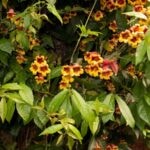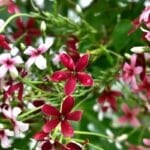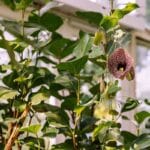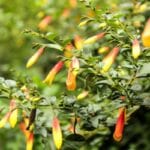Porcelain berry vine (Ampelopsis glandulosa var.) proves that beauty mishandled will make an ugly scene, especially in a landscape. There is no denying that this vine is widely known for its distinct berries. However, there are some precautions one must know.
Read on to learn more about this gorgeous but dangerous vine.
Botanical Information
Coming from the grape family (Vitaceae family), the Ampelopsis brevipedunculata is also known as the porcelain berry vine, porcelain vine, wild grape, and amur peppervine. It is a close relative of the grapevine, which is explained by being a part of the same family.
Spatial Distribution
The porcelain vine is a native grape species to Asian countries, such as Japan, Korea, and Northern Japan. In 1870, landscape art enthusiasts imported the vine and added it as an ornamental plant to their gardens. Naturally, the porcelain vine resides in forest edges, riversides, nearby ponds, and waste areas. These areas prove that this vine can thrive almost anywhere. However, its growth is optimized when planted in areas belonging to USDA zones 5 through 9.
Growth Habits
Porcelainberry thrives in marginal environments such as forest edges, pond margins, stream banks, thickets, and other disturbed areas with full to partial shade.
The porcelain berry vines can grow as wide as 15 feet in a growing season. In uncontrolled environments, this vine forms a massive forest floor covering and pestering trees and native shrubs.
Also, their crawling and twining abilities are enhanced by their tendrils. The vine’s tendrils allow the plant to extend for more than 20 feet in height and 15 feet in width. Also, the woody vine thrives erect, spreading, and climbing, which makes it a very versatile plant.
Leaves
Leaf shapes can vary but are often heart shaped, deeply lobed with three to five divisions. Its hairless leaves are arranged alternately on its stems. Moreover, each leaf extends from 3 to 6 inches long.
Flowers
Unlike the berries, the vine’s flowers are not noticeable. The flowers take an erect umbrella-like form, which is often seen in small clusters. Also, its blooms are green or white with no scent on new growth. Summer is the best time to observe these inconspicuous white flowers.
Fruit and Seeds
The main attraction for the porcelain vine comes after the blooming season when the fruits are ripe and ready to show. Unlike the flowers, the multi colored berries of porcelain vine vary from lavender, pink, black, and bright blue as the fruit matures.
Also, they are oval, slightly succulent, and extend from a fourth to a half of an inch in diameter. Moreover, this plant’s fruits are always erect in stature even if the vine itself is drooping. The best seasons to see these are during early fall and late summer.
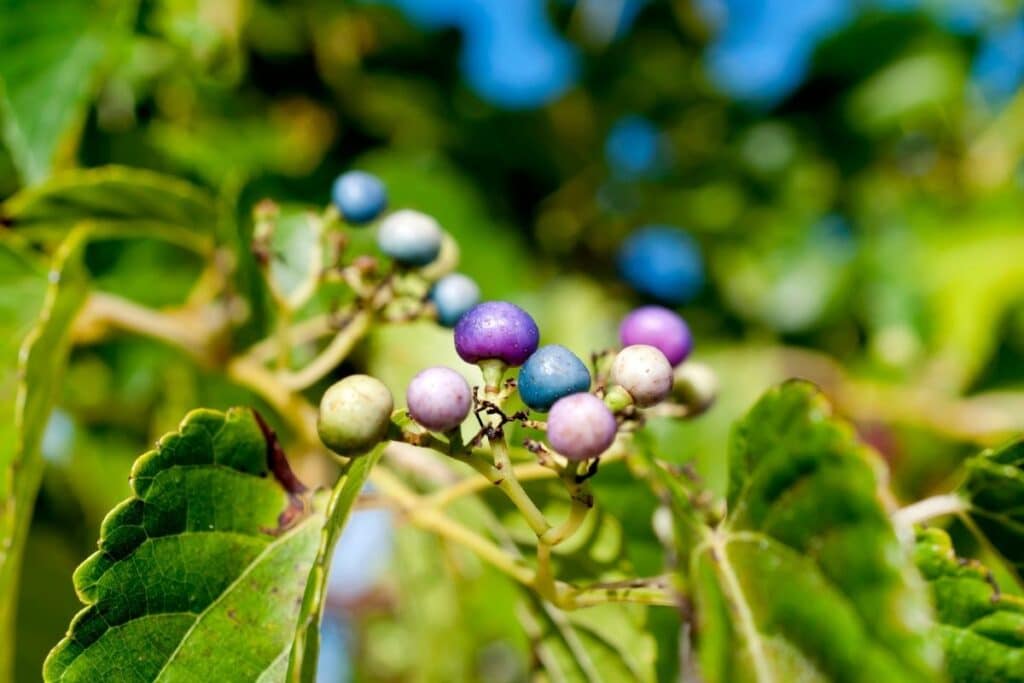
Grow and Care Tips
Sun Requirement
Full light is ideal for fruit production, although these native plants can also take a little shade.
Water Requirement
This invasive species survives the drought and requires minimal amounts of water. After periods of dry spells, it is best to apply more water.
Temperature and Humidity
These native species flourish when planted in warm and humid climates. However, it can also survive harsher conditions.
Soil Requirement
The best planting medium for the Amur peppervine is clay, silt, or sandy soil. It also needs to be moist, porous and has good drainage.
Moreover, the invasive plants need a 12 to 24 feet planting distance from other native vegetation. The space allowance will allow the vine to grow quickly and develop without harming other plants.
Fertilizer Requirement
The application of fertilizer is not necessary as long as the soil is rich in organic matter. However, a bi-annual or quarterly application of slow-release complete fertilizer would benefit all the plants in the landscape.
Maintenance Activities
Pruning the Amur peppervine is an important maintenance activity for landscapes with it. As a potential weed, it is necessary to schedule pruning to ensure the well-being of this plant and other plants around it.
Also, training will do wonders in controlling the porcelain vine. It is vital to provide sturdy and durable supporting structures because the vine can be dense and heavy. Having good support will prevent accidents in the landscape.
Propagation
The varicolored berries are not only famous to humans but also small mammals and birds. They help the vine reproduce by spreading the seeds. Aside from using the seeds, stem cuttings are also viable planting materials. Both seeds and stem cuttings require a warm and moist environment.
It can also spread vegetatively by resprouting from roots, especially when above-ground vines are clipped. For faster rooting or germinating process, plant regulating hormones may be applied. An example of a plant hormone is auxin, a rooting hormone often used in propagating various plants.
Some Varieties of Porcelain Berry Vine
‘Citrulloides’
This landscape plant is characterized by having different foliage with 5-lobed leaves with a deeper laceration.
‘Elegans’
What characterizes this variety is its more petite and variegated foliage. At its immature stages, the leaves are light green with a subtle hint of pink. It leaves then turn to white and green variegation when the leaves mature.
‘Maximowiczii’
This variety is differentiated by having more pronounced leaf lobes.
Function In The Landscape
The porcelain vine is introduced in different places for its ornamental value. It is used as a privacy screen and shade by incorporating various structures, such as trellises, fences, and walls. It serves those functions efficiently thanks to its vast growth and board and dense leaves.
Also, the fruits not only bring color to the landscape but also bring ecological activity by enticing small animals and birds. It makes the vertical landscapes more interesting and attention-grabbing.
Potential Harm
The porcelain vine is susceptible to Japanese beetles. However, this only happens once in a while, and the vine is resilient to survive some pests.
Aside from having a pest, this vine can also be one. As mentioned above, the porcelain vine is an invasive weed. The Department of Natural Heritage and Flora of Virginia refers to this vine as “highly invasive and troublesome.” It can cause havoc in any landscape, and its berries are poisonous to humans.
Given this threat, there are two ways to control the plant. The first method is by manually uprooting the porcelain vines. This activity should be performed before it reaches the fruit-bearing stage.
Although, this applies to younger and fewer vines. When dealing with an established porcelain berry, cutting the stems and smearing herbicides on the exposed cuts is more efficient.
Another way is by incorporating chemical treatment along with mechanical control. Systemic herbicides such as glyphosate and triclopyr will help control the weed. Remember to apply the recommended rate to avoid any accidental damage and soil toxicity.
FAQs
What is the use of porcelain vine?
Porcelain vine (Ampelopsis brevipedunculata), specifically the variegated form, is often cultivated for its ornamental value. It is grown as a decorative vine, appreciated for its colorful berries and foliage, making it suitable for arbors, fences, or trellises.
What is the history of porcelain berries?
Porcelain berry (Ampelopsis brevipedunculata) was originally brought from Russia and southeast Asia in the 1870s to use for ornamental purposes and erosion control. Porcelain berries are native grapes to Japan and northern China and were intentionally introduced in the 1870s as an ornamental.
What is the best herbicide for porcelain berries?
Controlling porcelain berries can be challenging, and management methods often involve the use of systemic herbicides. Glyphosate-based herbicides are commonly recommended for controlling porcelain berries, but it’s crucial to follow label instructions and consider potential impacts on surrounding plants and the environment. Persistent and repeated efforts may be needed for effective control.
See more hanging vines you can grow.
References
*image by kariphoto/depositphotos

